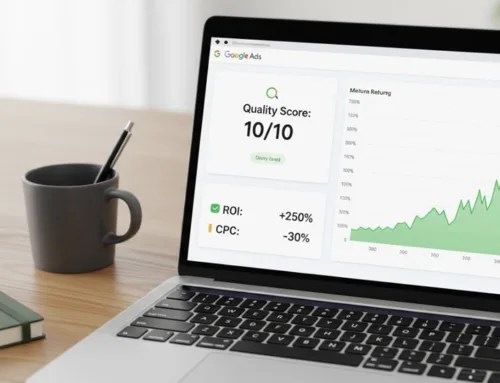The DMA (Digital Markets Act) came into force on March 6, imposing new constraints on digital giants. Among the many changes expected, we’ve chosen to focus on those that will give CSS comparators greater visibility in Google search results.
To this end, we met up with Nicolas Leroy, Kelkoo’s Product Director, to get his impressions and thoughts on the first changes we’ve seen.

Nicolas Leroy,
Product Director, Kelkoo
“There’s a lot of expectation around the DMA and we’re vigilant about how it comes to fruition.”
How do you see the implementation of the DMA?
Overall, we see the DMA in a very positive light. In the shopping sector, there is an abuse of dominance case against Google that began in 2014 and continues to this day! This is a very long process. And the DMA’s promise to limit platform abuse is based on a much shorter timeframe, and that’s already positive.
After that, the difficulty for the DMA team is that there are a number of platforms and vertical integrations involved, and there’s going to be an enormous amount of work to verify that for each platform, each vertical, the solutions provided are positive. So there’s a lot to look forward to, and we’re keeping a close eye on how things turn out.
How did you prepare for the implementation of the DMA?
Google has announced a series of changes – 3 or 4 in all – to the results pages of its search engine, all of which concern the Shopping vertical. And if we want to reap the benefits of each of these changes, we need to think about the end-to-end user experience, from Google to the merchant, via the comparator.
So we have to think about the whole experience and see if we need to optimize or evolve our site. This isn’t easy, as Google hasn’t shared many details with us in advance. And they themselves are in a phase of appreciating the changes and the impact on their users. So we’re doing a lot of thinking and testing, and at the same time Google may yet make other changes.
What are the first changes you’ve noticed?
Firstly, since August 2023, Google has begun introducing free placements for advertisers and CSS (Comparison Shopping Service). This means that product grids are integrated into Google’s organic results. When you click on a product, you’re taken to a product viewer with offers from merchants or CSS. It’s a free source of traffic for merchants and CSS.
Another much talked-about change is the introduction of a new type of PLA (Product Listing Ads) for CSS. Today, the PLA module displays offers that lead to the merchant’s site. From now on, this module can integrate offers placed by merchants and by CSS. Google has tested this with a number of CSS pilots on the market. Kelkoo was the pilot in France and the UK. This opportunity will be open to all CSS this week, for the launch of the DMA. We’ll see how many players in the comparator market are going to use them, and what the market share of PLAs with CSS will be versus classic PLAs. Everyone will be watching closely over the coming weeks.
In another change, Google has done away with the shopping tab, and replaced it with a Products tab, which displays PLA-type results, and a Product Site tab, which displays SEO results from comparators instead.
Did you notice any impact following the test phase on PLAs incorporating CSS?
Yes, it’s concrete traffic that a priori has an interesting quality, that converts well. So it’s quite positive. But these campaigns were operated by Google, so we only have a partial view of their management, optimization and profitability. And this was a small-scale test, so it’s hard to say what place CSS PLAs will take in relation to classic PLAs. Since March 6, we’ve had the upper hand, and now things are really going to get underway. We’ll see in a few weeks whether the solution is viable for us.
Can all this have a positive impact on your relationship with merchants?
We hope so! In fact, everything will depend on the market share of CSS PLA compared with conventional PLA. That’s where the answer lies! If CSS PLA is viable for comparators and gains market share, it will enable us to develop different relationships with merchants.
Can SEO become an issue for CSS again?
It’s hard to say just yet. Google has announced new decorations for the SEO results of comparators, but has not indicated any changes in the algorithm. So we don’t expect much more traffic from this angle. After that, we’ll have to watch how the Products and Product Sites tabs are used. If many consumers use them and they generate more SEO traffic, then we’ll have to see whether we need to reinvest in SEO. Today, it’s still a little early to have a solid signal on the return of SEO for CSS.
There are still many uncertainties about the real impact of the DMA for comparators?
Kelkoo remains very vigilant in this area. Last year, we were very surprised to see Google introduce shopping placements more prominently than before, such as these product grids in Google’s organic results. But, in reality, all PLA placements lead to product pages. Google wants to be the place where people choose their products, and comparators are just there to display prices, once the choice has been made. But we want to help consumers in a more global way, from discovery to price research. But Google, through its design, has chosen to keep the product search part on Google and not on the comparators, which is already a bias!
Keeping up with all these changes requires real agility?
Yes, we do a lot of monitoring. It’s a disruptive period, with a lot of major changes – GA4 and Performance Max last year, the DMA, Privacy Sandbox and maybe Google SGE this year. This has strong consequences for the industry and merchants first and foremost. But Kelkoo has always been agile. When Google launched its Panda algorithm in 2010 and removed SEO traffic, we were able to pivot and react to changes in the market, and that’s one of our strengths. Beyond the uncertainties, it’s an interesting time, requiring reflection and creativity.
Mis à jour le 3 February 2025
Mis à jour le 3 February 2025




